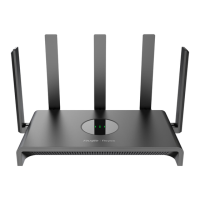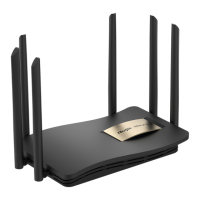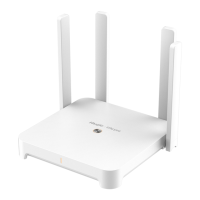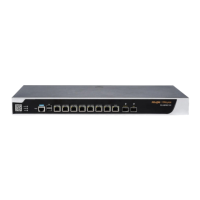Hardware Installation and Reference Guide Appendix
31
6.2 Cabling
When the RG-EG300GH-E router is installed in a standard 19-inch cabinet, secure the cables around the cable
management brackets. Top cabling or bottom cabling is adopted according to the actual situation in the
equipment room. All transferred cable connectors should be placed at the bottom of the cabinet in an orderly
manner instead of outside the cabinet that is easy to touch. Power cords are routed beside the cabinet, and top
cabling or bottom cabling is adopted according to the actual situation in the equipment room, such as the
positions of the DC power distribution box, AC socket, or lightning protection box.
6.2.1 Requirements for the Minimum Cable Bend Radius
⚫ The bend radius of a fixed power cord, network cable, or flat cable should be over five times greater than
their respective diameters. The bend radius of these cables that are often bent or plugged should be over
seven times greater than their respective diameters.
⚫ The bend radius of a fixed common coaxial cable should be over seven times greater than its diameter. The
bend radius of the common coaxial cable that is often bent or plugged should be over 10 times greater than
its diameter.
⚫ The bend radius of a fixed high-speed cable (such as SFP+ cable) should be over five times greater than its
diameter. The bend radius of the fixed high-speed cable that is often bent or plugged should be over 10 times
greater than its diameter.
6.2.2 Precautions for Bundling up Cables
⚫ Before cables are bundled, mark labels and stick the labels to cables wherever appropriate.
⚫ Cables should be neatly and properly bundled in the cabinet without twisting or bending, as shown in Figure
6-3.
Figure 6-3 Binding Cables (1)
⚫ Cables of different types (such as power cords, signal cables, and ground cables) should be separated in
cabling and bundling. Mixed bundling is not allowed. When they are close to each other, it is recommended
to adopt crossover cabling. In the case of parallel cabling, maintain a minimum distance of 30 mm (1.18 in.)
between power cords and signal cables.
⚫ The cable management brackets and cabling troughs inside and outside the cabinet should be smooth

